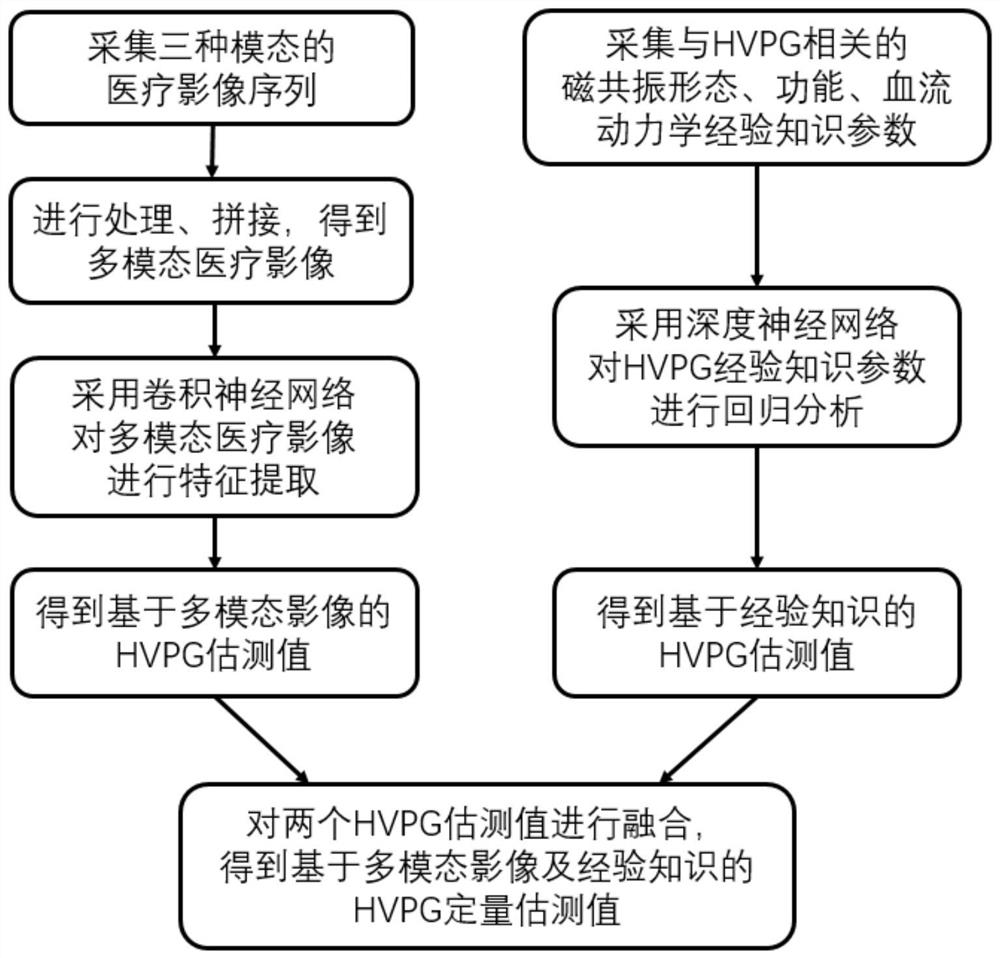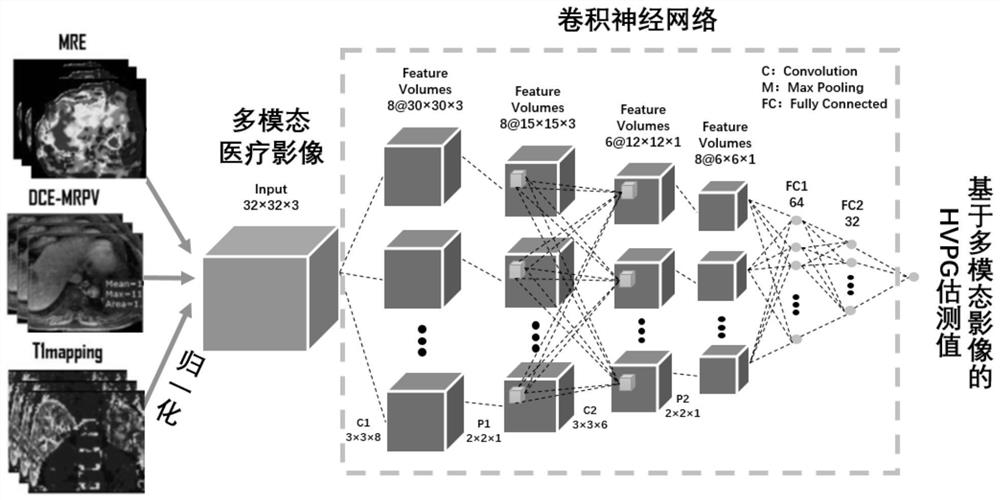A method for noninvasive assessment of hepatic venous pressure gradient
A pressure gradient and hepatic vein technology, applied in the field of medical images, can solve the problems of inability to achieve comprehensive multi-dimensional evaluation, large influence of subjective experience, and lack of quantitative evaluation.
- Summary
- Abstract
- Description
- Claims
- Application Information
AI Technical Summary
Problems solved by technology
Method used
Image
Examples
Embodiment Construction
[0032] The present invention will be further described in detail below in conjunction with specific embodiments and with reference to the accompanying drawings.
[0033] The flow chart of the method of the present invention is as follows figure 2 shown, including the following steps:
[0034] Step 1: Use Convolutional Neural Network to extract features from multi-modal medical images and obtain the HVPG estimated value H based on multi-modal images 1 , including the following steps:
[0035] Step 1.1, acquire three modalities of medical image sequences: resonance elastography (MRE), multi-phase dynamic enhanced magnetic resonance portal vein imaging (DCE-MRPV) and multi-flip angle plain scan (T1 mapping). After image sequence processing, stitching is performed to obtain multimodal medical images;
[0036]Three modalities of medical image sequences of MRE, DCE-MRPV, and T1 mapping were obtained through magnetic resonance imaging examination, and the three image sequences we...
PUM
 Login to View More
Login to View More Abstract
Description
Claims
Application Information
 Login to View More
Login to View More - R&D
- Intellectual Property
- Life Sciences
- Materials
- Tech Scout
- Unparalleled Data Quality
- Higher Quality Content
- 60% Fewer Hallucinations
Browse by: Latest US Patents, China's latest patents, Technical Efficacy Thesaurus, Application Domain, Technology Topic, Popular Technical Reports.
© 2025 PatSnap. All rights reserved.Legal|Privacy policy|Modern Slavery Act Transparency Statement|Sitemap|About US| Contact US: help@patsnap.com



